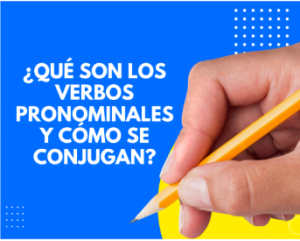At MaestroMío, our Spanish school, you’ll learn that the gerund is an impersonal verb form used to indicate an action in progress. In Spanish, it ends in -ando (for first conjugation verbs, like hablar → hablando) and -iendo (for second and third conjugation verbs, like comer → comiendo, vivir → viviendo).
Despite its frequent use, the gerund can cause mistakes if not used properly. In this article, we explain how and when to use it correctly.
1. When to Use the Gerund Correctly
- A) To indicate an action in progress
✅ The gerund is used to describe an action that is happening at the moment.
Examples:
- Estoy estudiando para el examen. (I am studying for the exam.)
- María sigue trabajando en su proyecto. (María keeps working on her project.)
- El niño anda jugando en el parque. (The child is playing in the park.)
📌 Tip: It’s used with auxiliary verbs like estar, seguir, continuar, ir, andar, venir to indicate an ongoing action.
- B) To indicate an action simultaneous to another
✅ The gerund expresses an action occurring at the same time as another.
Examples:
- Salió de casa cantando. (He left the house singing.)
- Pedro caminaba mirando su teléfono. (Pedro was walking while looking at his phone.)
- El perro entró ladrando. (The dog came in barking.)
📌 Rule: Both actions must happen simultaneously.
- C) To indicate the manner in which an action is performed
✅ The gerund indicates how the main action is carried out.
Examples:
- Resolví el problema pensando en la lógica. (I solved the problem thinking about logic.)
- Respondió el mensaje sonriendo. (He answered the message smiling.)
- Aprendí español practicando todos los días. (I learned Spanish by practicing every day.)
📌 Rule: The gerund answers the question “How?”
2. Common Mistakes When Using the Gerund
- A) Incorrect use of the gerund to indicate a subsequent action
❌ The gerund should NOT be used to indicate an action that happens after another.
Incorrect example:
- Llegó tarde, siendo sancionado por su jefe. ❌ (The sanction happens after the arrival.)
Correction: - Llegó tarde y fue sancionado por su jefe. ✅
- B) Incorrect use as an adjective
❌ The gerund CANNOT be used to describe permanent characteristics of a noun.
Incorrect example:
- El coche estacionando es rojo. ❌ (Another structure should be used.)
Correction:
- El coche que está estacionado es rojo. ✅
- C) Incorrect use of the gerund with perception verbs
❌ The gerund should NOT be used to indicate an action resulting from another.
Incorrect example:
- Vi un accidente ocurriendo en la calle. ❌
Correction:
- Vi un accidente que ocurría en la calle. ✅
📌 Tip: In these cases, it’s better to use a conjugated verb form.
3. Summary and Tips to Remember
| Correct use of gerund | Example |
| Action in progress | Estoy estudiando. |
| Simultaneous action | Salió corriendo. |
| Manner of action | Aprendió español practicando. |
| ❌ Does not indicate sequence | Llegó tarde y fue sancionado. |
| ❌ Does not work as adjective | El coche que está estacionado es rojo. |
💡 Tip to avoid mistakes: If the gerund seems to indicate a future or subsequent action, it is probably being used incorrectly.
4. Conclusion
The gerund is a useful tool to express ongoing or simultaneous actions but must be used carefully. Avoid using it to indicate future actions, describe nouns, or show the result of another action.
By following these rules, you will improve your Spanish and avoid common mistakes. Practice using the gerund correctly to speak and write better!






